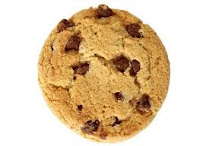Football season is here and so are the tailgating parties! Here are some suggestions keep your tailgating delicious and yet still healthy.
- Don't go to the game hungry? Have a healthy snack such as an apple with a tablespoon of peanut butter before you go. If you go to the game ravenous, you are more likely to binge on unhealthy chips and dips.
- Be prepared - bring an insulated bag or small cooler and bring cut up veggies. Make your own healthy dip from 0% Greek Yogurt or use salsa.
- Stay hydrated: Thirst often disguises itself as hunger. Bring plenty of bottled water.
- Opt for grilled chicken (without the skin). Choose turkey or buffalo burgers over traditional ground beef. Grill kebobs - loaded with veggies and chicken or a lean cut of beef.
- Skip the bun: Save the carbs and calories by wrapping your chicken or burger in lettuce.
- Fill half your plate with grilled veggies (i.e. eggplant, zucchini, squash) marinated in balsamic vinegar or a green salad (lite dressing on the side).
Picture Credit: AFP Ted Methias



